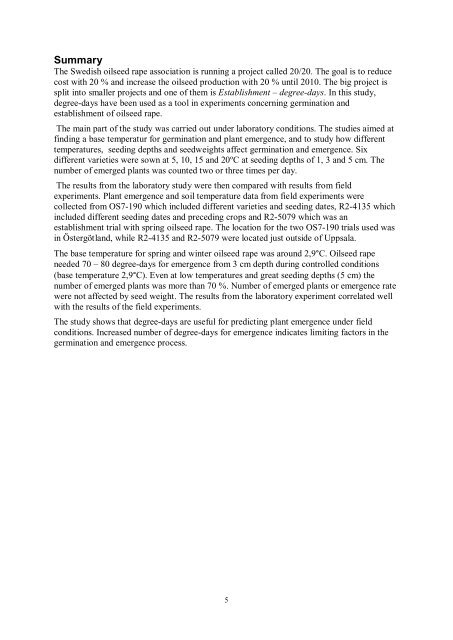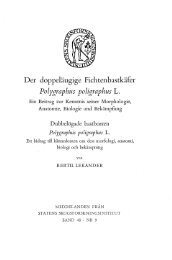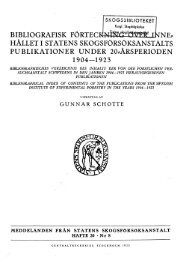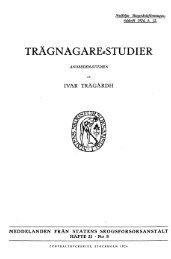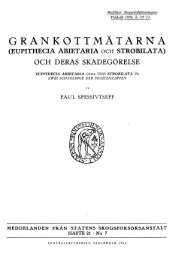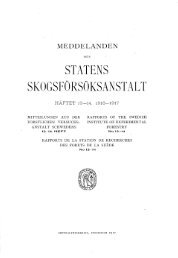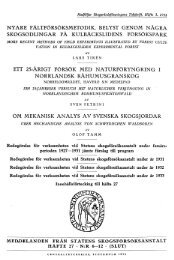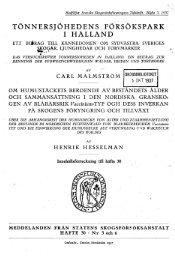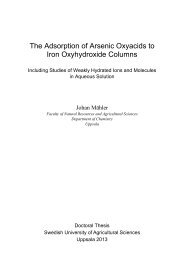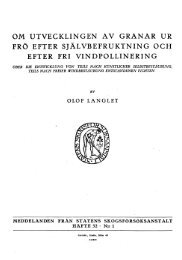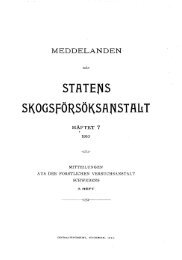Temperaturens betydelse för groning och uppkomst av ... - SLU
Temperaturens betydelse för groning och uppkomst av ... - SLU
Temperaturens betydelse för groning och uppkomst av ... - SLU
Create successful ePaper yourself
Turn your PDF publications into a flip-book with our unique Google optimized e-Paper software.
Summary<br />
The Swedish oilseed rape association is running a project called 20/20. The goal is to reduce<br />
cost with 20 % and increase the oilseed production with 20 % until 2010. The big project is<br />
split into smaller projects and one of them is Establishment – degree-days. In this study,<br />
degree-days h<strong>av</strong>e been used as a tool in experiments concerning germination and<br />
establishment of oilseed rape.<br />
The main part of the study was carried out under laboratory conditions. The studies aimed at<br />
finding a base temperatur for germination and plant emergence, and to study how different<br />
temperatures, seeding depths and seedweights affect germination and emergence. Six<br />
different varieties were sown at 5, 10, 15 and 20ºC at seeding depths of 1, 3 and 5 cm. The<br />
number of emerged plants was counted two or three times per day.<br />
The results from the laboratory study were then compared with results from field<br />
experiments. Plant emergence and soil temperature data from field experiments were<br />
collected from OS7-190 which included different varieties and seeding dates, R2-4135 which<br />
included different seeding dates and preceding crops and R2-5079 which was an<br />
establishment trial with spring oilseed rape. The location for the two OS7-190 trials used was<br />
in Östergötland, while R2-4135 and R2-5079 were located just outside of Uppsala.<br />
The base temperature for spring and winter oilseed rape was around 2,9°C. Oilseed rape<br />
needed 70 – 80 degree-days for emergence from 3 cm depth during controlled conditions<br />
(base temperature 2,9°C). Even at low temperatures and great seeding depths (5 cm) the<br />
number of emerged plants was more than 70 %. Number of emerged plants or emergence rate<br />
were not affected by seed weight. The results from the laboratory experiment correlated well<br />
with the results of the field experiments.<br />
The study shows that degree-days are useful for predicting plant emergence under field<br />
conditions. Increased number of degree-days for emergence indicates limiting factors in the<br />
germination and emergence process.<br />
5


